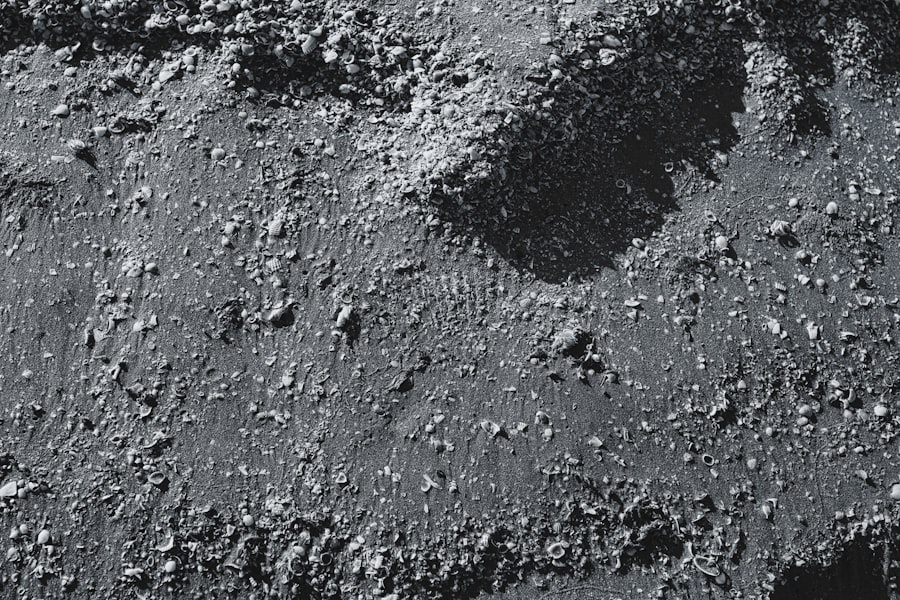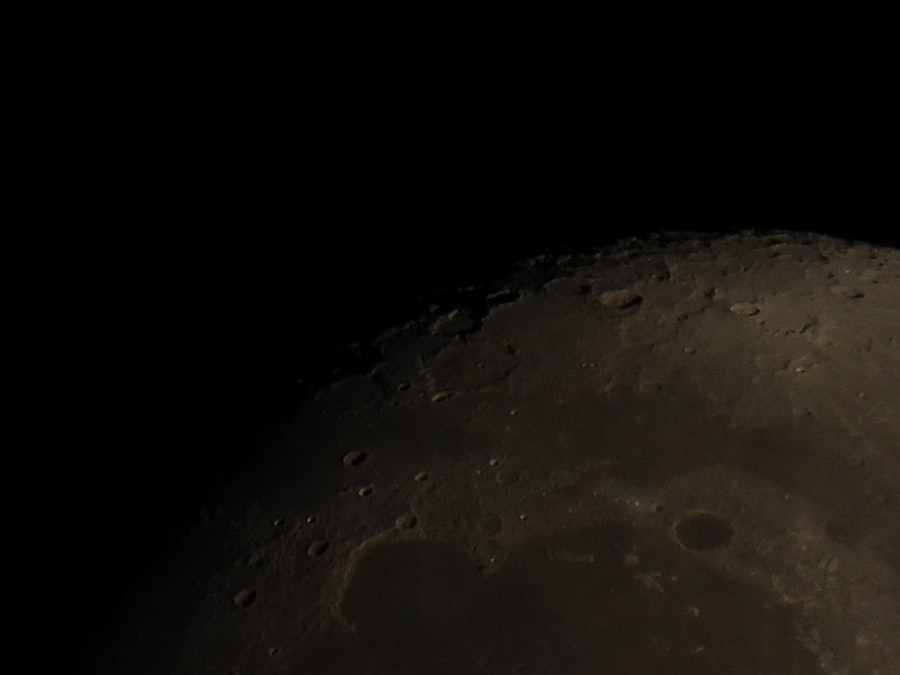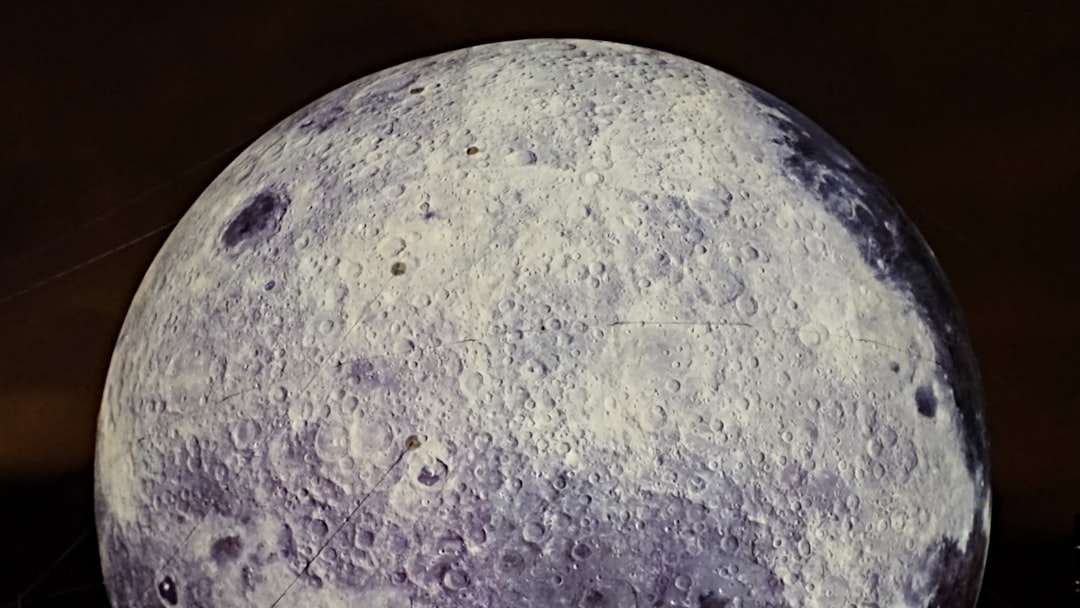The Moon, Earth’s closest celestial neighbor, has long captured the imagination of scientists, engineers, and dreamers alike. Its surface is rich in a variety of resources that could potentially be harnessed for both scientific and commercial purposes. Among these resources are water ice, which could be used for life support and fuel production, and various minerals and metals that could support construction and manufacturing in space.
The presence of regolith, a layer of loose material covering solid bedrock, offers a wealth of materials that could be processed for construction or even as raw materials for advanced technologies. Moreover, the Moon’s unique environment presents opportunities for scientific research that could lead to breakthroughs in various fields. For instance, the lunar regolith contains isotopes and elements that are rare on Earth but abundant on the Moon.
These include rare earth elements and other materials that are critical for modern technology. The potential for in-situ resource utilization (ISRU) on the Moon could not only support lunar missions but also pave the way for sustainable human presence beyond Earth, making the Moon a stepping stone for deeper space exploration.
Key Takeaways
- Lunar resources have the potential to provide valuable materials for space exploration and future human settlements.
- Challenges of extracting resources from the moon include the high cost of transportation, the harsh lunar environment, and the lack of infrastructure.
- Economic opportunities of lunar resource exploitation include the potential for a new space-based economy and the creation of new industries and jobs.
- Private companies play a significant role in lunar resource exploration, investing in technology and innovation to make resource extraction feasible.
- Environmental impacts of lunar resource exploitation need to be carefully considered to minimize damage to the lunar environment and prevent contamination of Earth.
The Challenges of Extracting Resources from the Moon
Despite the promising potential of lunar resources, the challenges associated with their extraction are significant. The Moon’s harsh environment poses numerous obstacles, including extreme temperature fluctuations, high levels of radiation, and a lack of atmosphere. These conditions complicate the design and operation of equipment needed for mining and processing lunar materials.
Engineers must develop technologies that can withstand these extremes while remaining efficient and reliable over extended periods. Additionally, the logistics of transporting equipment to the Moon and establishing operational bases present further challenges. The cost of launching payloads into space remains prohibitively high, which means that any lunar resource extraction operation must be meticulously planned to maximize efficiency and minimize waste.
Furthermore, the lack of infrastructure on the Moon means that initial missions will require significant investment in establishing habitats, power sources, and communication systems before any resource extraction can begin.
The Economic Opportunities of Lunar Resource Exploitation

The economic implications of lunar resource exploitation are vast and varied. As nations and private entities look to the Moon as a potential source of wealth, the prospect of mining operations could lead to new industries and job creation on Earth. The extraction of valuable materials such as platinum group metals or rare earth elements could significantly impact global markets, potentially reducing reliance on terrestrial sources that are often subject to geopolitical tensions.
Moreover, the development of lunar resources could facilitate advancements in space technology and exploration. For instance, water extracted from the Moon could be converted into hydrogen and oxygen for rocket fuel, enabling deeper space missions to Mars and beyond. This would not only reduce costs associated with launching fuel from Earth but also create a sustainable model for long-term human presence in space.
As such, the economic opportunities presented by lunar resource exploitation extend beyond immediate profits; they could fundamentally alter humanity’s relationship with space.
The Role of Private Companies in Lunar Resource Exploration
| Private Companies | Role in Lunar Resource Exploration |
|---|---|
| SpaceX | Developing spacecraft for lunar missions |
| Blue Origin | Investing in lunar lander technology |
| ispace | Planning lunar resource prospecting missions |
| Planetary Resources | Exploring asteroid mining for lunar resources |
In recent years, private companies have emerged as key players in the realm of lunar exploration and resource extraction. With advancements in technology and a growing interest in space commercialization, these companies are poised to take on roles traditionally held by government agencies. Firms like SpaceX, Blue Origin, and Astrobotic are developing innovative solutions for lunar landers, rovers, and mining equipment that could revolutionize how resources are extracted from the Moon.
The involvement of private companies also introduces a competitive dynamic that can drive innovation and reduce costs. By leveraging their expertise in engineering and technology development, these companies can accelerate the timeline for lunar missions and resource extraction initiatives. Furthermore, partnerships between private entities and governmental space agencies can enhance collaboration and share risks associated with lunar exploration.
This synergy may lead to more efficient use of resources and a greater likelihood of successful missions.
The Environmental Impacts of Lunar Resource Exploitation
While the potential benefits of lunar resource exploitation are enticing, it is crucial to consider the environmental impacts associated with such activities. The Moon’s surface is a fragile ecosystem that has remained largely untouched since its formation. Mining operations could disrupt this delicate balance, leading to unforeseen consequences for both the lunar environment and future exploration efforts.
Dust generated by mining activities could pose risks to equipment and habitats, while alterations to the lunar landscape may affect scientific research opportunities. Moreover, there is a growing concern about the long-term sustainability of lunar resource extraction practices. As humanity ventures further into space, it is essential to adopt responsible practices that minimize harm to celestial bodies.
This includes developing technologies that limit environmental degradation and ensuring that any extraction activities are conducted with an awareness of their potential impacts on future generations of explorers.
The Legal and Regulatory Framework for Lunar Resource Exploitation

The legal landscape surrounding lunar resource exploitation is complex and still evolving. The Outer Space Treaty of 1967 established fundamental principles governing the use of outer space, including the Moon. It states that celestial bodies cannot be claimed by any nation and emphasizes that activities in space should benefit all humankind.
However, as private companies begin to explore resource extraction on the Moon, questions arise regarding ownership rights and regulatory oversight. Currently, there is no comprehensive legal framework specifically addressing lunar resource exploitation. This lack of clarity creates uncertainty for companies looking to invest in lunar mining operations.
Some nations have begun to develop their own regulations regarding space resources; for example, the United States passed legislation allowing private companies to claim rights to resources extracted from celestial bodies. However, without international consensus on these issues, conflicts may arise as different countries pursue their interests in lunar resources.
The Technological Advances Driving Lunar Resource Exploration
Technological innovation plays a pivotal role in advancing lunar resource exploration efforts. Recent developments in robotics, artificial intelligence, and materials science have opened new avenues for efficient mining operations on the Moon. Autonomous rovers equipped with advanced sensors can navigate the lunar terrain while conducting geological surveys to identify optimal mining sites.
These technologies not only enhance operational efficiency but also reduce risks associated with human presence on the Moon. Additionally, advancements in propulsion systems and spacecraft design have made it more feasible to transport equipment and personnel to the Moon. Reusable rockets have significantly lowered launch costs, making it economically viable for private companies to invest in lunar missions.
As technology continues to evolve, it is likely that new methods for extracting and processing lunar resources will emerge, further enhancing the feasibility of sustainable operations on our nearest celestial neighbor.
The Potential for Helium-3 Extraction on the Moon
One of the most intriguing prospects associated with lunar resource exploitation is the extraction of helium-3 (He-3), a rare isotope that holds promise as a clean energy source. Helium-3 is scarce on Earth but is believed to be abundant on the Moon’s surface due to solar wind interactions over billions of years. Its potential use in nuclear fusion reactions could provide a nearly limitless source of energy without the harmful byproducts associated with traditional fossil fuels or nuclear fission.
The feasibility of helium-3 extraction hinges on developing efficient mining techniques and fusion technology capable of harnessing its energy potential. While research into fusion energy has made significant strides in recent years, practical applications remain elusive. However, if successful, helium-3 could revolutionize energy production on Earth and beyond, making lunar resource exploitation not just an economic opportunity but also a critical component in addressing global energy challenges.
The Role of International Collaboration in Lunar Resource Exploitation
As nations increasingly turn their attention toward lunar resource exploitation, international collaboration will be essential in navigating the complexities associated with these endeavors. Joint missions between countries can pool resources, share expertise, and mitigate risks associated with exploration efforts. Collaborative projects can also foster goodwill among nations as they work together toward common goals in space exploration.
Furthermore, international partnerships can help establish norms and standards for responsible resource extraction practices on the Moon. By working together to develop guidelines that prioritize sustainability and minimize environmental impacts, countries can ensure that lunar resource exploitation benefits all humankind rather than becoming a source of conflict or competition. Such collaboration may also pave the way for future joint missions to Mars or other celestial bodies.
The Future of Lunar Resource Exploitation: Opportunities and Risks
The future of lunar resource exploitation is filled with both opportunities and risks that must be carefully considered as humanity embarks on this new frontier. On one hand, successful extraction efforts could lead to significant advancements in technology, energy production, and economic growth. The potential for establishing a sustainable human presence on the Moon could serve as a springboard for further exploration of our solar system.
On the other hand, there are inherent risks associated with pursuing these opportunities without adequate planning or oversight. Environmental degradation, geopolitical tensions over resource claims, and ethical dilemmas surrounding exploitation practices are all concerns that must be addressed proactively. As nations and private companies move forward with their plans for lunar resource extraction, it will be crucial to strike a balance between ambition and responsibility.
The Ethical Considerations of Exploiting Lunar Resources
The ethical implications surrounding lunar resource exploitation cannot be overlooked as humanity stands on the brink of a new era in space exploration. Questions about ownership rights, environmental stewardship, and intergenerational equity must be at the forefront of discussions regarding how resources are extracted from celestial bodies. As private companies enter this arena alongside government agencies, it becomes increasingly important to establish ethical guidelines that prioritize responsible practices.
Moreover, there is a moral obligation to consider how lunar resource exploitation may impact future generations of explorers and scientists. Ensuring that activities conducted today do not compromise opportunities for future research or exploration is essential for fostering a sustainable relationship with our solar system.
The commercialization of lunar resource extraction is a rapidly evolving field, with numerous companies and nations vying to tap into the Moon’s potential wealth. This endeavor not only promises to revolutionize industries on Earth by providing rare materials but also paves the way for sustainable space exploration. For a deeper understanding of the implications and current developments in this area, you can explore a related article on the topic by visiting this link. This article delves into the technological advancements and international collaborations that are shaping the future of lunar mining.
WATCH THIS! 🚀 Why The Moon Is The Next Battlefield: The Geopolitics of Cislunar Space
FAQs
What is the commercialization of lunar resource extraction?
The commercialization of lunar resource extraction refers to the process of extracting and utilizing resources from the moon for commercial purposes, such as fuel, water, minerals, and other valuable materials.
Why is there interest in commercializing lunar resource extraction?
There is interest in commercializing lunar resource extraction due to the potential for accessing valuable resources that could be used for space exploration, scientific research, and commercial ventures. Additionally, the moon’s resources could support future human settlements and space missions.
What are some of the resources that could be extracted from the moon?
Some of the resources that could be extracted from the moon include water ice, helium-3, rare earth elements, metals such as iron and aluminum, and regolith (lunar soil).
How would lunar resources be extracted and utilized for commercial purposes?
Lunar resources could be extracted using various methods, such as mining, drilling, and excavation. These resources could be utilized for activities such as manufacturing, construction, fuel production, and sustaining human life in space.
What are some potential commercial applications of lunar resources?
Potential commercial applications of lunar resources include the production of rocket fuel, construction materials for space habitats and infrastructure, manufacturing of goods in space, and supporting future space tourism and exploration missions.
What are some challenges and considerations for commercializing lunar resource extraction?
Challenges and considerations for commercializing lunar resource extraction include the development of cost-effective extraction technologies, transportation of resources back to Earth or to other space destinations, legal and regulatory frameworks for resource utilization, and environmental impact assessments.
